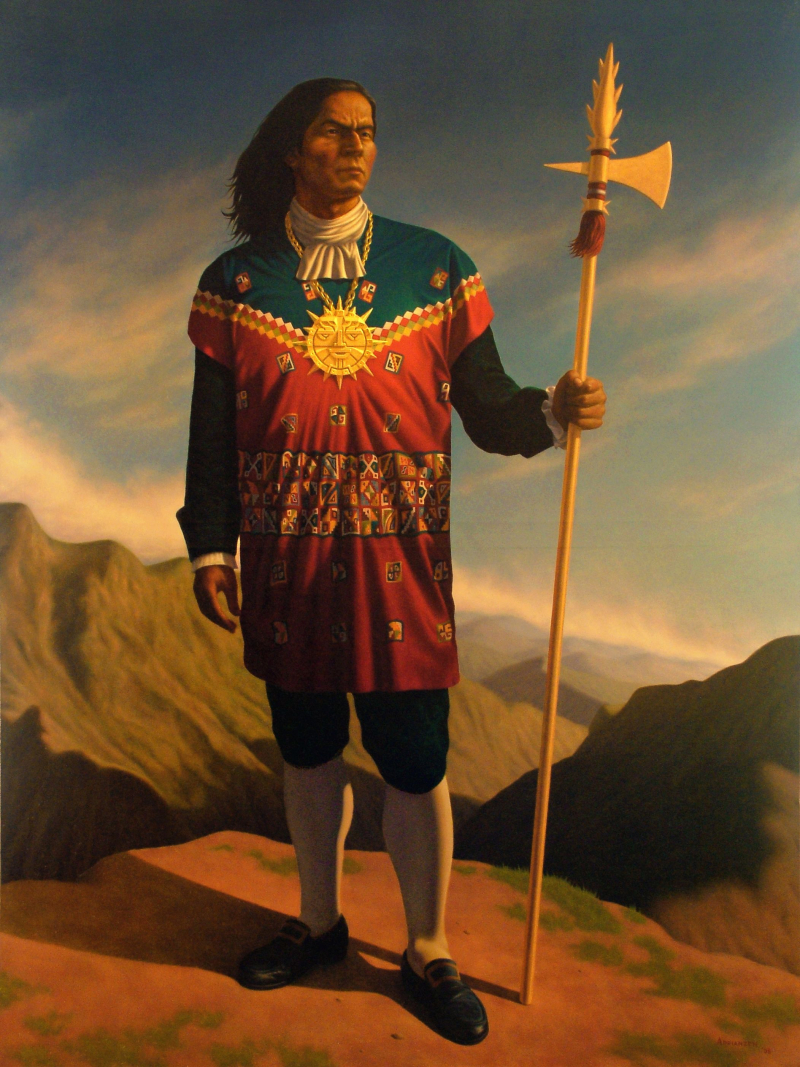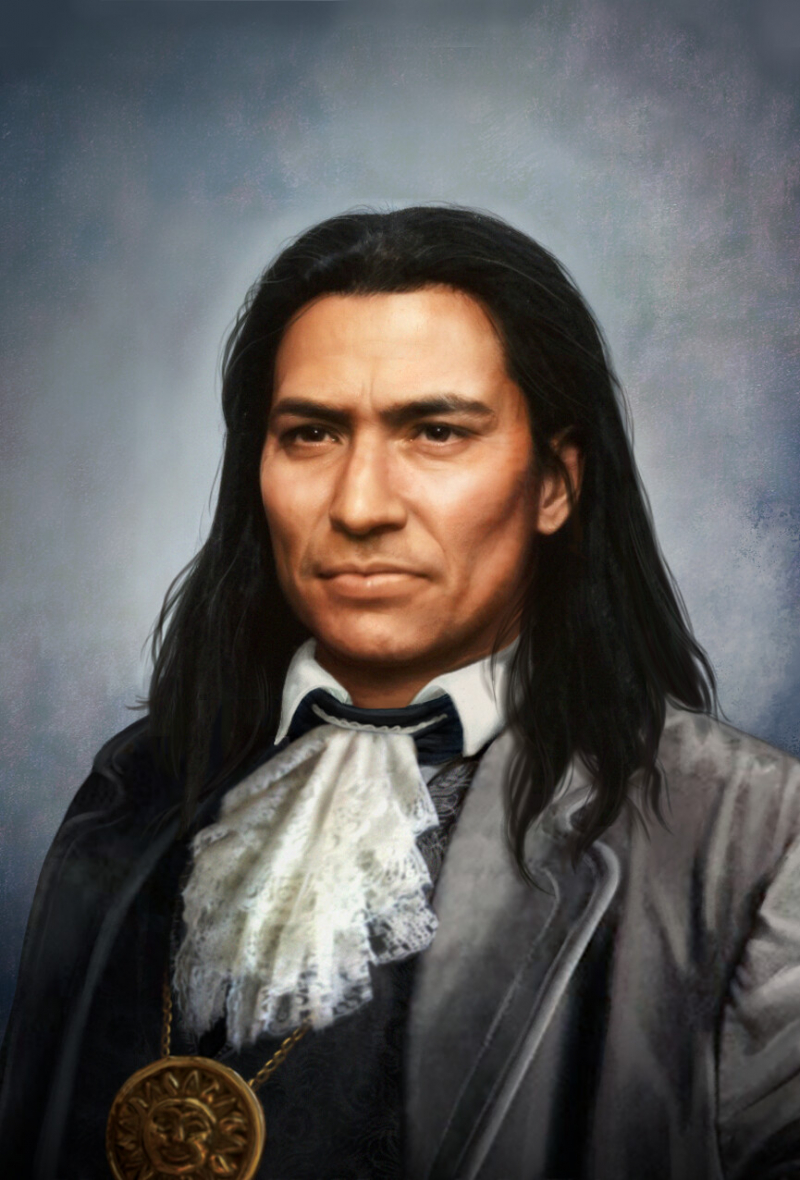Túpac Amaru II
José Gabriel Condorcanqui (March 19, 1738 - May 18, 1781), also known as Túpac Amaru II, was an indigenous Cacique who led a large Andean rebellion against the Spanish in Peru. He later became a mythical figure in the Peruvian struggle for independence and indigenous rights movement, as well as an inspiration to a variety of causes in Spanish America and beyond.
Túpac Amaru II's fame grew to the point where indigenous rebels in the plains of Casanare in the New Granada region referred to him as "King of America."
Later movements invoked Túpac Amaru II's name to gain the support of indigenous peoples, including Felipe Velasco Túpac Amaru Inca or Felipe Velasco Túpac Inca Yupanqui, who wanted to rise up in Huarochirí (Lima) in 1783. The Túpac Amaru II's rebellion marked the start of the Peruvian War of Independence in Peruvian history.
This great rebellion had a strong influence on the Conspiracy of the Tres Antonios, which arrived in Chile on January 1, 1781, at the height of the insurgency. They were encouraged to act after hearing news of Túpac Amaru II's advances in the Viceroyalty of Peru.
General Juan Velasco Alvarado's (1968-1975) government in Peru welcomed the formalized effigy of Túpac Amaru II as a symbol of the Gobierno Revolucionario de la Fuerza Armada (Revolutionary Government of the Armed Forces) that he led, Peru's only government of leftist ideology in its history. He referred to him as a national hero. The symbol of Túpac Amaru II was carried by Peruvian education and official historiography in 1968, which was a novelty since independence. In his honor, one of the main rooms of the Government Palace was named after him. That room had previously been Francisco Pizarro's, but his portrait had been replaced by that of the indigenous rebel.












